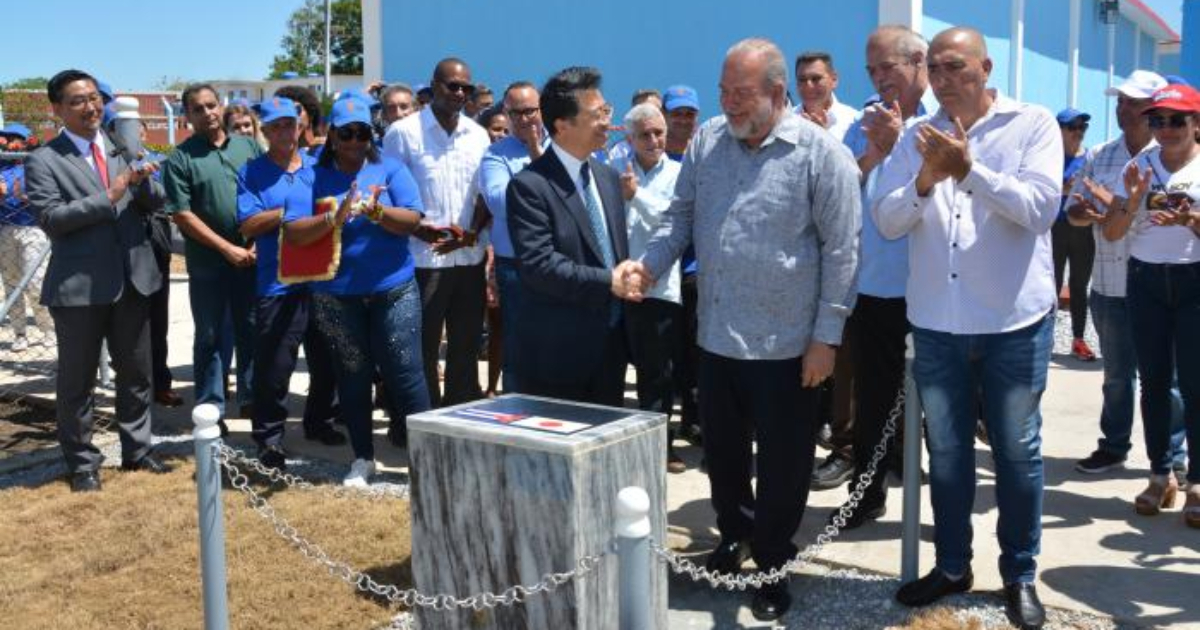
The Cuban regime completed the assembly works of an electrical installationmade with more than 20 million dollars donated by Japan, which, according to the official press, will improve electricity generation and supply on the Isle of Youth.
The donation made in July 2022 was initially estimated at $17 million. However, the official press of the Cuban regime did not report the reasons why the cost of the work ended up exceeding 20 million.
The work will sustain thetechnology supplied to Cuba by the Japanese consortium formed by the companies Nishizawa Limited and Toshiba Energy Systems & Solutions Corporation, which offered a rapid discharge battery system to regulate, stabilize and manage energy in photovoltaic or wind farms.
The Japan International Cooperation Agency (JICA) was in charge of delivering the Japanese donation. The batteries make it possible to compensate for fluctuations caused by the instability of photovoltaic generation, he explained.Granma, celebrating the launch of the collaboration project in which several Japanese companies and Cuban companies participated.
The first MinisterManuel Marrero Cruz and the Minister of Energy and Mines,Vicente de La O Levy, attended the inauguration of the work. In addition, the Japanese ambassador to Cuba was present,Kenji Hirata and the JICA representative in Cuba,Tatsuya Ashida.
“Know how to maintain all this equipment, all these facilities, so that they last, and because we want to extend this experience to the rest of the country,” said Marrero Cruz to the workers of the Unión Eléctrica (UNE) in charge of the facilities.
For its part,Alfredo Lopez Valdes, general director of the UNE, acknowledged that the works cost “years of hard work” to result in a facility that will be able to provide approximately 15 additional MW, with which La Isla de la Juventud would be in a position to generate 20% of energy from renewable sources.
Between speeches of energy sovereignty and scarcity of fossil fuels, the Cuban authorities resorted to their usual propaganda rhetoric to celebrate a new donation from Japan, a country that has already seen the result of previous cooperation efforts with Cuba, but that persists in keeping open that diplomatic channel in its relations with the Havana regime.
In February 2018,Japan donated almost 10 million dollars to Cuba for the cleaning of Havana. The financial assistance from the Japanese Government was intended for the purchase of specialized cleaning equipment to "optimize the collection and final disposal of solid waste" in the capital, which celebrated its fifth centenary the following year.
The donation was made official during the visit to Cuba of the Minister of State for Foreign Affairs of Japan,Masahisa Sato, who signed the agreement together with the first vice minister of the Ministry of Foreign Trade and Foreign Investment (MINCEX) in Cuba,Antonio Luis Carricarte.
At the end of 2019, there were 141 collection trucks on the Island (one hundred of them donated by Japan). Last August, the governor of Havana,Yanet Hernandez Perez, assured thatonly 39% of the 440 garbage collection teams were working. The rest were missing tires, batteries and rims, among other spare parts.
In addition to this failed cooperation project, which ended up wasting a million-dollar donation, Japan has been an important actor in the Cuban regime's strategy to attract handouts.
In April 2022, JICA donated equipment for pathology and imaging services,valued at 10 million dollars that were delivered to 34 institutions of the Cuban Ministry of Public Health (MINSAP).
The last of these deliveries, carried out in July 2023, benefited two hospitals in Havana and one in Pinar del Río that received computer resources destined for the diagnostic imaging digitalization project.
The history of donationsJapan to the Cuban regime is full of examples like these, in which Japanese development cooperation resources end up wasted and without bringing benefits or a tangible improvement in the lives of Cubans.
What do you think?
COMMENTFiled in: